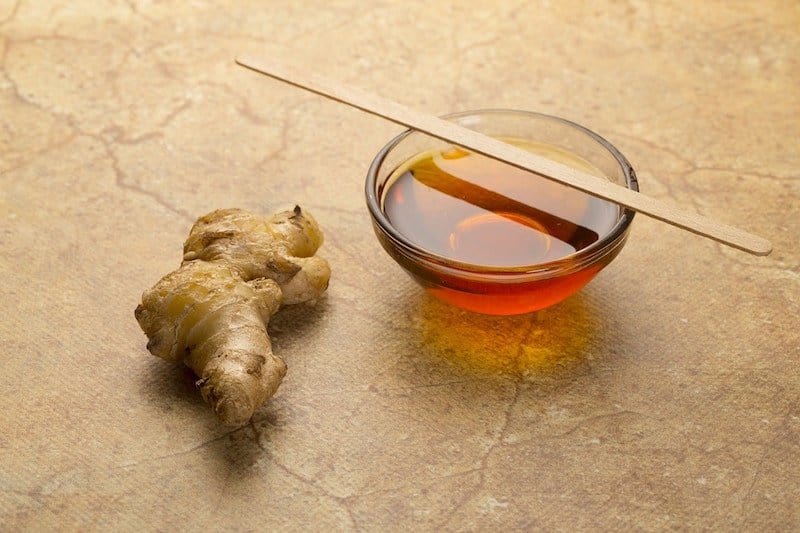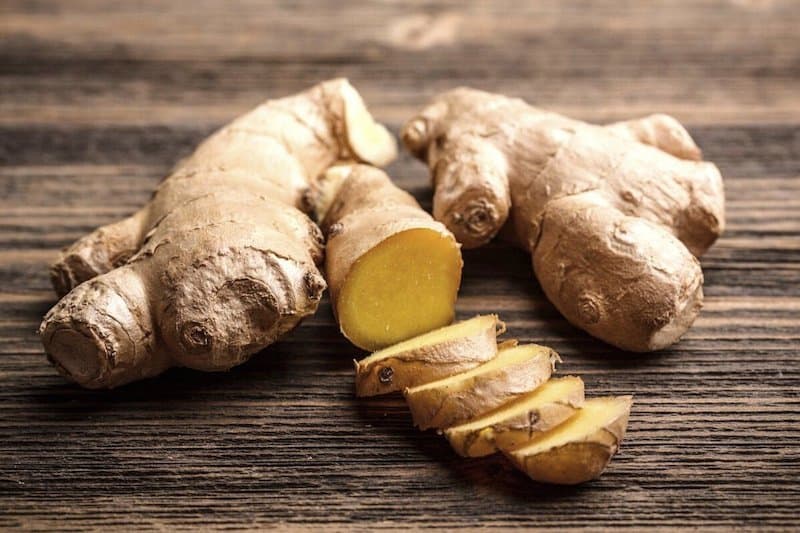Can You Ferment Ginger in Honey?
Did you know that fermenting your own food at home doesn’t only have to involve a salt and water brine solution? You can actually substitute the salty for sweet by fermenting food in honey!
If you want something to satisfy your sugar cravings, honey is an excellent alternative to brine and is compatible with many different fruits and vegetables, including ginger.
You definitely can ferment ginger in honey, and you can enjoy it by adding it to your tea or spreading it on toast. The process does differ slightly from, say, kimchi or sauerkraut recipes. Ginger should be cut into smaller slices so the water can be extracted from it, and it generally takes longer to ferment in honey. But in under 3 months, your first batch should be ready for eating. Read on to learn more.
Can You Ferment with Honey?
As you might have picked up on by now, fermenting with honey is definitely possible and is pretty common among home fermenters.
Raw honey is full of natural yeast and bacteria (in particularly compared to processed honey) that are prime for conducting the fermentation process. Raw honey will usually have a low water content so it doesn’t spoil on the shelf due to yeast fermentation. So as you can see, the yeast needs the addition of water to begin fermentation.
Adding lots of water to honey kickstarts the fermentation process to make mead (the alcoholic beverage). But you can also start the fermentation process by adding fruits or vegetables to honey because water can be extracted from them.
It’s the sugars in honey that draw the water out of the fruits or vegetables to carry out the fermentation process and preserve them in the honey. However, because there’s much less water and a lot more sugar (compared to when you’re making fermented vegetables in a brine solution), the fermentation process takes longer.
How To Ferment Ginger in Honey
Making honey ferments is pretty easy to do at home.
All you need is fresh ginger and raw honey. In general, the mixture has to sit for two weeks for the process to complete but a couple of months is more ideal.
Let’s get into the steps on how to ferment ginger in honey:
- Use a spoon or knife to peel the fresh ginger and cut it into thin slices.
- Toss the slices into an 8-ounce jar until it is about half-way full. Now simply cover the slices with honey. Make sure the honey settles all the way down to the bottom.
- Remove any air pockets that may have formed inside. You can speed things up with a knife to let the honey settle in and remove the air pockets.
- Make sure all of the ginger slices are completely covered with honey.
- Now set the jar in a dark corner of your counter so you monitor it’s progress everyday.
After the honey and ginger start fermenting, the mixture will start thinning down and become more watery.
The longer you allow it to ferment, the stronger the ginger taste you’ll get. After the first 2 to 3 weeks, you can test it to see how it tastes. You can keep testing it periodically until the taste reaches your liking (some fermenters will allow the fermentation process to go months).
When you’re happy with the taste, you can throw the jar in the fridge to slow the fermentation process, so the flavors don’t get too strong. However, you don’t have to do this and can just leave it on your counter at room temperature if you prefer.
Pro tip #1: You’ll notice that the ginger slices will start floating to the top after a couple of weeks in. A simple solution is to turn the jar over so the ginger gets properly coated with honey. This usually takes a few minutes after which you can flip the jar back into its original position.
Pro tip #2: It’s important to burp your jar every now and then to let unwanted gases escape. You can burp the jar by slightly opening up the lid so the trapped gases can escape (note: burping shouldn’t be a problem after the first two or three weeks).
What Else Can You Ferment in Honey?
It’s not just ginger that you can ferment with honey. There are several recipes that involve all kinds of fruits and vegetables. Basically, any food item that is moist and has wild yeasts will be compatible with honey.
In addition to ginger, many fermenters will make garlic or turmeric honey ferments, staying on the savory side.
Other savory and also spicy options include honey fermented peppers and honey fermented jalapeños. These can be fermented whole or sliced.
For something sweeter, you can try berries, peaches, or even bananas. There are a ton of options!
Just remember that for non-porous produce that may not easily release their water content, it’s advised to cut them into smaller pieces. For example, you can dice larger fruits like apples and pears into smaller pieces. In the case of cherries, cut the fruit in half and remove the pit.
Once you’ve experimented with fermented various fruits and vegetables in honey, you can try fermenting honey itself to make mead! Click here to learn more.
In Summary
Honey ferments will take longer compared to brine ferments, but the results are definitely worth it and give you a great sweet option to balance out the salty.
But on that note, honey ferments can be savory (using ginger, garlic, or turmeric), spicy (using peppers or jalapeños), or sweet (using fruits like peaches, berries, or apples). You can really get creative with it.
I love adding my ginger honey ferment to tea when I feel sick because it always makes me feel better (I think it really does boost the immune system as they say). It’s well worth always having a batch on hand!








